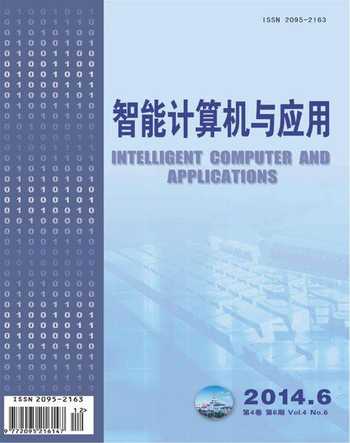无线通信下参数化室内定位技术研究与仿真
摘 要:随着数据业务和多媒体业务的快速增加,人们对定位与导航的需求日益增大,尤其是在复杂的室内环境中,定位精度是衡量室内定位技术的主要指标之一。本文首先分析传统的TOA、TDOA和RSSI室内定位方法,接着研究分析了新的室内定位方法,并进行了仿真分析。仿真结果表明,本文的定位方法有优于传统的室内定位方法。
关键词:室内定位;无线传输;接收信号强度;到达时间差
中图分类号:TP391 文献标识码:A
Abstract:With the rapid increase of data services and multimedia services, People's growing demand of positioning and navigation. Especially in the complex indoor environment. Positioning accuracy is one of the main indicators of measuring indoor positioning technology. This paper analyses the traditional TOA TDOA and RSSI indoor locating method, then analysis the new indoor location method, and a simulation analysis was carried out. The simulations reveal that the positioning of the method is superior to the traditional indoor positioning method.
Keywords:Indoor Positioning; Wireless Transmission; Received Signal Strength; Time Difference of Arrival
0 引 言
据调查,人们有87%左右的时间都是在室内活动,如办公楼、商城、机场大厅、展厅、仓库、图书馆、停车场等,所以人们对室内定位与导航的需求日益增大,尤其当室内环境渐趋复杂时,就更加需要精准确定移动终端或其持有者、设施与物品在室内的位置。但与室
外环境比,室内环境受定位时间、定位精度及室内复杂等现实条件的多方限制,因此已然较为完善的定位技术目前还无法得到良好的有效利用[1-7]。而且,由于复杂环境下的室内定位在地下救助、智能家居、大型展厅等方面表现了重要的应用背景,这就使得室内定位的研究在一定程度上可以提高生活质量,保护生命财产安全,因而此课题研发也相应具备了基础性的现实意义和实用价值。
基金项目:重庆市科委基础与前沿研究计划项目(cstc2014jcyjA40007)。
作者简介: 刘小洋(1980-),男,安徽安庆人,博士,讲师,主要研究方向:无线通信定位技术、智能仿真等。
4结束语
本文对传统的TOA、TDOA和RSSI室内定位方法进行了详细的分析,在此基础上开展了新的室内定位算法研究,并针对其进行了仿真分析。结果表明本文的方法要优于传统的TOA、TDOA和RSSI室内定位方法。
参考文献:
[1]MANI F, VITUCCI E M. Parameterization of a polarimetric diffuse scattering model in indoor environments[J]. IEEE Transactions on antennas and propagation,2014,62(8):4361-4364.
[2] LAN K C, SHIH W Y. Using smart-phones and floor plans for indoor location tracking [J]. IEEE Transactions on antennas and propagation,2014,44(2):211-221.
[3] PUYOL M G, BOBKOV D, ROBERTSON P,et al. Pedestrian simultaneous localization and mapping in multistory buildings using inertial sensors[J]. IEEE Transactions on antennas and propagation,2014,15(4):1714-1727.
[4] 刘颖,苏军峰,朱明强.基于平方根容积卡尔曼滤波的RSSI 定位参数估计算法[J].系统仿真学报,2014,26(1):119-124.
[5]董哲,吴瑶,孙德辉.室内定位技术的多源数据融合算法研究[J].系统仿真学报,2014,35(5):1526-1530.
[6] YANG Po, WU Wenyan. Efficient particle filter localization algorithm in dense passive RFID tag environment[J]. IEEE Transactions on Industrial Electronics, 2014,61(10): 5641-5651.
[7] SHARP I, YU K. Indoor TOA error measurement, modeling, and analysis[J]. IEEE Transactions on Instrumentation and Measurement,2014,63(9):2129 -2144.
[8] 万群.室内定位理论方法和应用[M].北京:电子工业出版社,2012.
[9] 金培权, 汪娜, 张晓翔, 等. 面向室内空间的移动对象数据管理[J].计算机学报,2014,37(9):1-21.
[10]丁雪芳,王琪.基于改进支持向量机的Wi-Fi 室内定位算法[J].计算机工程与应用,2014,10(9):1-5.
[11] HIGUCHI T, FUJII S,YAMAGUCHI H,et al. Mobile node localization focusing on stop-and-go behavior of indoor pedestrians[J].IEEE Transactions on mobile computing,2014,13(7):1564-1578.
[12] LI L ,KROLIK J L. Simultaneous target and multipath positioning[J]. IEEE Journal of Selected Topics in Signal Processing, 2014,8(1):153-165.

